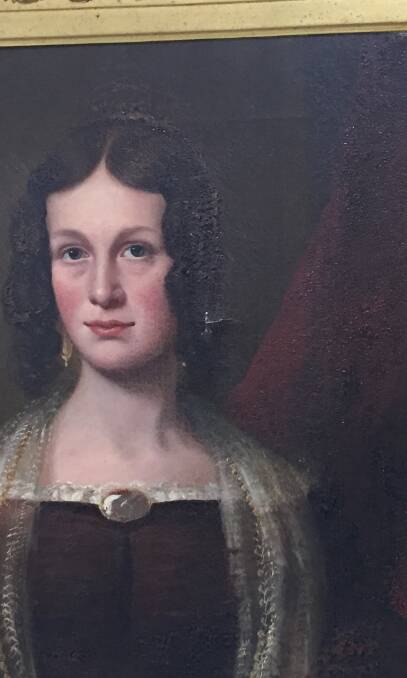
The last in our series about these paintings at the Art Gallery of Ballarat looks at the work involved in restoration of a mid-19th Century portrait.
Subscribe now for unlimited access.
$0/
(min cost $0)
or signup to continue reading
The canvas used in the picture of Elizabeth Henderson was prepared with a coating of rabbit skin glue and bitumen to seal and tighten it prior to oil painting. This made for a better surface to paint on, but absorbed moisture when it was present, causing swelling and cracking when the oil paint was dry. This is clearly visible in our image around Elizabeth’s hairline and to her left in the background.
Gordon Morrison, director of the gallery, say the first job of the art conservator is to check to see if there's any instability in any part of the paint; any detaching or laminating paint that’s coming off the canvas.
“I'm fairly confident that that's not an issue here”, says Mr Morrison. However, there’s a tear just below Elizabeth’s left ear.
“We can see the canvas has been struck from behind, and the canvas is actually torn along its weave. That’s a point of potential fracture that has to be attended to.
This repair involves a patch of linen being attached, glued to the back of the canvas. Any loose threads in the in the tear will be matched in the linen and glued back from the front.
A principle of contemporary conservation is that nothing that you do is can’t be taken completely back. These modern glues are reversible, says Mr Morrison. That’s a crucial difference from what took place in the past.
“Conservators or old-fashioned restorers from 40 or 50 years ago would often use materials that were absolutely irreversible – things like gluing down a painting with Araldite to a panel. There are some major works in Australian collections that have had that done to them,” he says.
Mr Morrison says the back of the canvas of our portrait is impregnated with acidic dust, which has a negative effect on the on the canvas itself.
“You’re looking at 150 or 160 years of oxidisation – basically a discolored layer of grime, dust and soot solution on the paint of the canvas itself. So the whole thing will have to be cleaned with a range of different solvents and one of those will be distilled water.
“They might use a certain amount of types of alcohol to clean off this greasy grime as well. The whole thing would be revarnished using natural varnishes.”
As to repairing the paint itself, Mr Morrison feels that as the crazing and craquelure are part of the natural ageing of paint, the conservator will need to ask him what he wants masked and what he would like to remain.
“My feeling, and probably this will be the general view of museum professional, is as long as the main subject is not being affected in a negative way, you basically let the work speak its age. We might argue for a little bit of touching up.”
This is the last in our series on the Henderson portraits. We’ll look next at the conservation of textiles.


